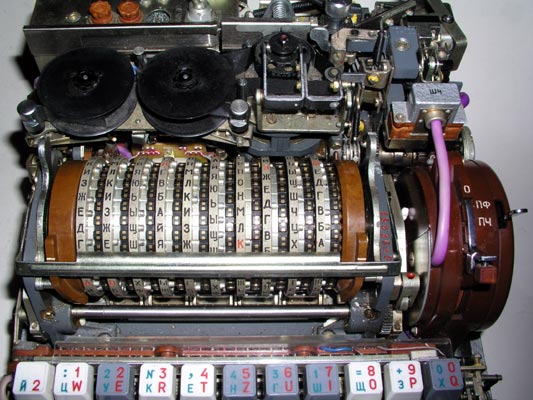

The first one was used in 1956 and was the mainstay of secure communications until the fall of the Berlin Wall in 1989. The Fialka, often called the Russian Enigma, was developed in the late 40s and early 50s by the Soviets, who needed a secure ciphering machine for message transmissions.

For many decades this machine was virtually unobtainable from behind the iron curtain, but in the last few decades examples have been released to the world. A highly complex ciphering machine used by the Soviets during the Cold War era, and also widely used by many of the Warsaw Pact countries of Europe and their allies including Cuba.

RARE EXAMPLE OF THE FIRST VERSION OF THE RUSSIAN FIALKA M-125 MN CIPHERING MACHINE. The power supply is a standard Eastern Bloc (DDR and Czech) metal-cased 24 volt PSU, with stencil number 98-71115 to case. WITH: Power supply, hand telegraph key unit and later reference manual. The machine complete with ten rotors, each with 30 Cyrillic characters, and a three row keyboard in Latin and Cyrillic with five-level paper tape reader below and paper tape punch and tape printing mechanism on top with punch card input on the left hand side, in grey metal casing with cover. Serial number 98-70913 stencilled to panel of case. The machine complete with ten rotors, each with 30 Cyrillic characters, and a three row keyboard in Latin and Cyrillic with five-level paper tape reader below and paper tape punch and tape printing mechanism on top with punch card input on the left.


 0 kommentar(er)
0 kommentar(er)
